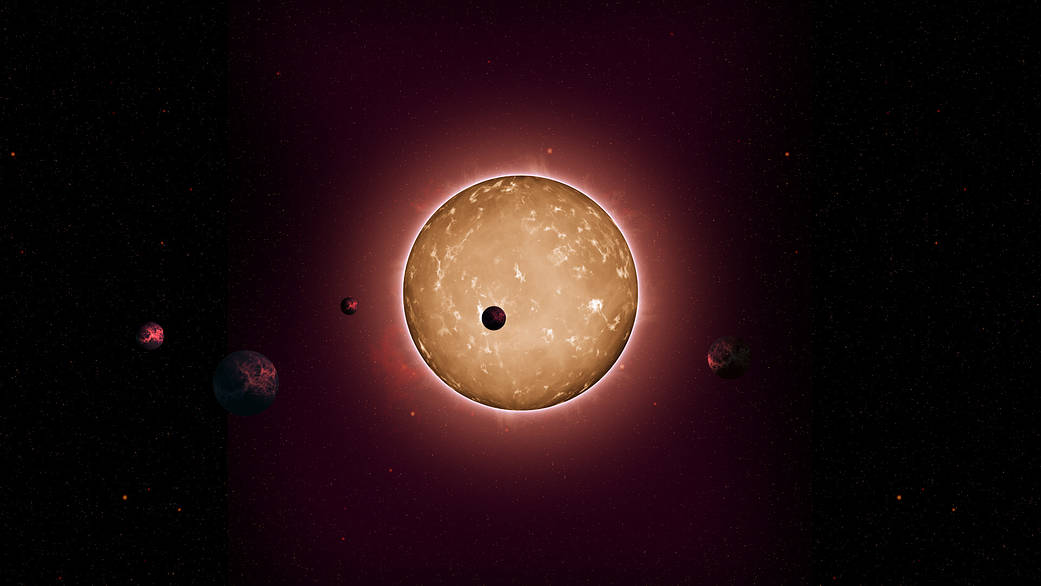
How Astronomers Use Eclipses to Discover Alien Worlds

Paul Sutter is an astrophysicist at The Ohio State University and the chief scientist at COSI science center. Sutter leads science-themed tours around the world at AstroTouring.com. Sutter contributed this article to Space.com's Expert Voices: Op-Ed & Insights.
As we prepare for the upcoming total solar eclipse set to cross the continental United States on Aug. 21, the mechanics of the event are pretty straightforward to explain: Occasionally the sun, moon and Earth end up in straight line, and when they do, the moon casts its shadow on the Earth. Voila: eclipse!
From our perspective here on the surface of the Earth, it appears as if the disk of the moon covers the face of the sun. You have to be near or at totality — when the sun is fully covered — to notice the sun's dimming with your unaided eyes. However, sophisticated light-measuring instruments can easily pick up even the slightest hint of reduction in sunlight no matter the extent of the eclipse.
Now let's play a game. Let's say you attached these keen instruments to a telescope and you rocketed a few light-years away from the solar system. And instead of observing the sun-moon eclipse, you stared at the sun as the Earth meandered in its orbit. If you lined everything up just right and stared long enough, eventually you would get to see the tiny planet cross the face of its massive sun. [Total Solar Eclipse 2017: Here Are the Best Live-Video Streams to Watch]
With enough dedication to your astronomical duties, you could conceivably measure a dip in brightness as the Earth entered the edge of the sun, and a return to normalcy as the planet moved on.
Let's take it to the extreme: You're so far away that you can't even see a tiny dot representing the Earth. Could you still measure the telltale dip in brightness? Well, measuring the light output of a star is much easier than hunting for an insignificant speck of a rocky world, so I suppose with enough technological progress one could achieve it.
And imagine this: What if we did this all the time? Well, we do. This hunting for subtle eclipses is our primary method for detecting exoplanets — planets outside the solar system, orbiting their own host stars. Of course, astronomers don't call it "subtle eclipse method," but rather the "transit method."
Get the Space.com Newsletter
Breaking space news, the latest updates on rocket launches, skywatching events and more!
This method allows us to find exoplanets big and small orbiting stars of all sizes and ages. Over 4,000 planets and counting! We haven't found an exact match for Earth yet — but we're getting closer to finding a match with every new planet detected.
The transit method isn't perfect, of course; it relies on a chance alignment among the star, the exoplanet and us. If that planet just happens to orbit perpendicular to our line of sight, we're out of luck. Thankfully, there are, to put it mildly, many stars out there, even within our nearby galactic neighborhood, so enough coincidences occur to give us a solid census of our celestial cousins.
So, as you're feasting your eyes on the upcoming solar eclipse, you might wonder if some distant observer is also enjoying the event.
Follow Paul @PaulMattSutter and facebook.com/PaulMattSutter. Follow us @Spacedotcom, Facebook or Google+. Originally published on Space.com.
Join our Space Forums to keep talking space on the latest missions, night sky and more! And if you have a news tip, correction or comment, let us know at: community@space.com.

Paul M. Sutter is an astrophysicist at SUNY Stony Brook and the Flatiron Institute in New York City. Paul received his PhD in Physics from the University of Illinois at Urbana-Champaign in 2011, and spent three years at the Paris Institute of Astrophysics, followed by a research fellowship in Trieste, Italy, His research focuses on many diverse topics, from the emptiest regions of the universe to the earliest moments of the Big Bang to the hunt for the first stars. As an "Agent to the Stars," Paul has passionately engaged the public in science outreach for several years. He is the host of the popular "Ask a Spaceman!" podcast, author of "Your Place in the Universe" and "How to Die in Space" and he frequently appears on TV — including on The Weather Channel, for which he serves as Official Space Specialist.










